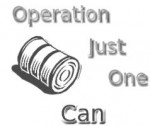You can’t have a business without having customers and unfortunately, where there are customers, there are also “difficult” customers. We’ve all had to deal with them in varying degrees- the customers that argue, yell and complain, the customers that call/email constantly and want you to be available at all hours of the night, the customers that are never satisfied, the customers that are looking to get a freebie, etc.
So, I have tapped into the minds of the wonderful CarolRoth.com contributor network of entrepreneurs and experts to find out their best tips and advice for dealing with these “difficult” customers. Their answers are presented below in no particular order.
You may notice some similar insights, but I kept the ideas separate, as something in the way one is framed may resonate differently with you.

1. When They're About to Hang Up!
Wow them with an apology, even if you haven't done anything wrong (in your vision anyway). Then, if they're local to you, take them out for a meal. We are all connected by our stomachs, and if you can connect with someone over food, it makes a lasting impression!

2. Dealing With Difficult Custom
Dealing with difficult customers is the same as dealing with a difficult spouse. First SHUT UP AND LISTEN until they are done. Then, repeat back what they said and make sure that you are on the same page. You then can reason with them. Most people just want to be heard and respected.

3. You Are Not a Bus!
We're not buses. We don't HAVE to take every paying customer. We can pick and choose the people with whom we do business.
We are always polite, but always firm. If a customer is not persuaded to return the politeness, we make it clear that we are free to choose not to work with them. It sounds harsh, but we've found that reminding people that we are not in the doormat business is actually more effective than taking "the customer is always right" to absurd limits.

4. 5 Steps for Problem Customers
Think of it this way- the customer isn't 'difficult'. For them, the business you work at is difficult, because it doesn't function the way they want it to and/or it's not meeting their needs. So, set aside that "We're right, so you can't be" attitude and do these five steps:
1. LISTEN to their words, rationale, and situation
2. ASK a deeper question to understand intent
3. DESIGN a solution that bridges the gap
4. Take ACCOUNTABILITY for making a next step happen
5. THANK the customer after fixing 'it'

5. Let 'Em Have it!
When working with an awful customer, let them have it! I don't mean start yelling at them for giving you a hard time. In fact, you should give them what they want. That will surprise them, and hopefully turn them into a customer evangelist.

6. It's My Fault
Accept responsibility. Even if the customer is wrong, so what? They are still your customer. Listen and take responsibility for not communicating, not training, or not paying attention. If one customer complains, chances are, there are others who are dissatisfied, too. Make sure, that after you remedy the situation, you take additional the time to ensure that it never happens again. Repeat offenses have no place in retaining customers.

7. Customer Attitudes Be Gone
What can you expect with customers? Well, difficult ones come with the territory. So, how do you deal with them and try and retain their loyalty, if that is your goal? One piece of advice is go to the core of what is causing them to be difficult. Consider this process like peeling an onion layer by layer. As you expose each layer, you learn more of what they are looking for and are getting closer to resolving their issues. Before you go this far, make sure that this customer is worth keeping.

8. Clear Your Client Karma
Our client and customer experiences reflect our inner beliefs and memories, as well as our karma. By clearing our karma, we change our outer experiences. Our clients and customers actually can improve, as well as can attract better clients and customers, when we clear our karma. By taking responsibility for our outer experiences, we can change our results and improve our experiences. Our clients can change, as well as ourselves, because of the work we do on ourselves.

9. Charge Them More!
Create an ideal client profile and pay attention to its outcome. If you're not a hand-holder, create interview questions that will let you know that your clients can easily make their own decisions. Listen as the prospect answers. Most of us can catch "clients from hell" during the interview process (although we might not pay attention to our gut). If you want to work with the client anyway, raise your rates to accommodate the extra time it will take you to get this client's project done.

10. Who, What, Where, When & How?
What I find works the best is to listen to what they are really asking for & not what you think they need. Most people become far more reasonable when they believe they are being understood and that their needs are being taken care of. Understanding what they need, who they need it for, where it needs to be, when it needs to be there and how puts you on the same side of their problem. Once they believe you truly understand their needs, they become more reasonable and tend to pay more.

11. Validate!
Difficult Customers are usually confused. The art of validation is powerful to diffuse the situation. Do not defend your position - it only creates a lose-lose posture. Validate by saying, thanks for letting me know. That's a great question. How may I help? I'm glad you called/emailed, etc. Then, think SOLUTION! Validating difficult customers doesn't mean you agree with them, it means that you honor their concern and create a solution for a win-win ending.

12. Is it My Way - or the Highway?
Difficult clients raise two key issues: 1. Is the way you're doing business creating the problem? Be honest. Does something need to change on your end? Your approach? Your availability? Your personality? Your expertise? 2. If it's not you, maybe you don't need them. "Firing" bad clients can be a good thing for your business. It just may not be the right fit. Getting rid of them can help you focus on the projects that allow you to hit home runs.

13. Bad Behavior Can Make Sense!
Mouthy demanding customers, customers who take up too much of your time when you've told them you only have a minute, customers who return an item used....all of these are examples of bad behavior. The one thing you need to keep in mind is that their behavior MAKES SENSE to them. Lonely, needy, or over indulged as kids perhaps, they get away with their antics. How do you deal with them? Put up boundaries as soon as you feel your emotions getting a rise. Be firm yet assertive and don't stand for it.

14. Kamloops
Don't take the Bait
When you're dealing with difficult people, there is an expectation that you will either react or counter-attack. Don't take the bait. Soften your tone of voice deliberately, and speak with courtesy, professionalism and respect. Remove your personal feelings from the conversation - hard to do - but worth it in the long run...

15. I Couldn't Agree With You More
The best way to deal with a difficult customer is to agree with them. "Wow, I couldn't agree with you more!" That will diffuse the upset and stop them in their tracks. It's absolutely the last thing they expect.
Or another way is to say, "Thank you so much for calling" (and mean it, because if they didn't call, you have no opportunity to turn them around.) Then acknowledge what you hear behind the words "I hear how upset/angry/frustrated you are, I'd feel that way if this happened to me too."

16. Become a Hero; Create a Hero
In difficult situations with customers, remember that they are only doing what they feel is right. Rather than argue, side with your customer. Understand why they are being difficult. More times than not, it is because of nothing you did. They were already upset due to something else!
Listen carefully to what they say and how they say it. Offer to be their personal hero in solving their problem. You will quickly find that they become less difficult. In the process, you will create a hero!

17. What Do You Really Want?
As a manager for over 10 years, I've had to deal with my fair share of unhappy clients.
When you deal directly with the public, someone will eventually end up being difficult, despite your best efforts.
The mistake I see most people make in these situations is trying to placate the difficult person by rapidly offering every possible solution to them.
By simply asking what experience the client would prefer right now, and giving it to them, I've instantly won the difficult person over.

18. Best Advice/Customer Service
You seem angry, are you angry at me? I want to help be on your side, can we do that?

19. Empathy to the Rescue!
Difficult customers are empathy-hungry. Provide your customers with understanding, and they'll instantly become easier to work with. 1) Paraphrase the problem they've described: "It sounds like your order arrived late." 2) Tell them you understand why it's frustrating. "I imagine you must have been frustrated to not have your order in time -- I'm so sorry." 3) Take action to remedy the problem. "We've sent you a replacement order, and a gift card as an apology." Empathy saves the day!

20. Let Them Vent or Fire Them
Difficult customers are usually people who have challenges in their lives that are creating feelings inside of them they cannot control. Let them vent, make them right, be kind and understanding and, if they continue to be impossible, return their money and fire them.

21. Difficult Customer "Mouthwash"
A colleague was nasty to a customer service rep who spoke slowly and with a thick Southern accent. Finally, the rep said: "Ma'am, are you finished being rude yet?" My colleague immediately apologized to the customer service rep for her poor treatment of a customer service rep!

22. Use Carefully Selected Words!
My one best tip for "dealing with difficult customers" is to use words seasoned with kindness despite how difficult that may be to deal with. There is a Proverb that states, "A soft answer turns away wrath, but a harsh word stirs up anger." By doing this, you can control the situation by using your carefully selected words to warrant their cooperation. This definitely takes a level of self control and patience, but in the end you have helped your business, a customer and more than that, a person.

23. Repeating Works
If a customer is irrational, quietly say "I hear what you are saying." When he keeps yelling or carrying on say "I hear what you are saying." If he continues to carry on say, "I hear what you are saying."
I have done this and it works every time--there is nothing to argue with you about since you told him that you heard what he is saying--it takes all of the explosive energy out of the conversation.

24. K.I.S.
Keep it Simple...Be sure to get oral and written instruction(s) from the customer; Do your very best and when all else fails, be nice enough to help them find someone else.

25. Fix it or Fire 'Em
The first task is to listen and determine if the bluster is disguising a valid point. If not, don't be afraid to fire them!
Some people just can't be satisfied (ironically, they're also usually the ones that pay the least). It may feel odd, but your business will benefit in two ways: your improved productivity and a drain on the resources of your competitor.
This is a last-resort measure; if you CAN save the relationship, you've earned loyalty (and referrals) like you won't believe!

26. Make Them Your Best Friend
I know it might be hard at times, but any difficult customer is an opportunity to capture a customer for life. If you treat them as your best friend who has information to share with you to make you and your company better, you will immediately disarm the situation, possibly learn something, and most importantly, gain their trust. You know that saying about when you get lemons, make lemonade. Well, here is your chance!

27. Loyal Royals
The best way to deal with a difficult customer is to treat them as royalty. Sounds extreme? Not in the least. Apologize for any inconveniences and dazzle the customer with exceptional service. Let them vent, offer something free and let the customer know you value their business. Roll out the red carpet and you will have loyal royals!

28. Swap Shoes
It is very easy to brand a customer "difficult" because we do not understand their complaint, believe their issues are unfounded or feel that they complain on a frequent basis. However, it is important to try and remove any emotion from the transaction and put yourself in their shoes. Try and get to the root of the behavior and tackle the problem at its core. You may eventually win them over and avoid a string of future problems.

29. You Deserve a D for Difficult
Does a difficult customer know they are difficult or do they think that they are right and you are a difficult unresponsive supplier?
One of the best ways to neutralize and disarm is a difficult customer is the following; "You are right for being upset based on the experiences you went through. There are reasons these happened and I am glad you told me about them. The good news is they no longer exist and here are the solutions we created for you."

30. Don't Sweat it
Remember, there are those that are a pain in the ***; then there are those who will cost you more resources than they provide by being a customer. Despite what some people will tell you, there are those customers that are just not worth keeping. Gauge what you can do for them and if it is too much or the person is just being a bully, let them go. I have seen businesses lose a lot of money (and owners lose a lot of sleep) due to an extremely tough customer. Don't let that be you.

31. A Complaint is a 4 Letter Word
No, not THAT one! A complaint is a GIFT. If a customer doesn't complain, they just leave and don’t come back. And they take their business and their referrals with them. Your customer is giving you a GIFT when they complain. It's your chance to fix a problem or resolve their issue. If you do so and they are happy with the outcome, they will remain your customer. The next time you get a complaint, thank your customer for letting you know about it. Apologize, fix it and follow up.

32. Nice 'Em
I have a tried and true rule that when things get out of hand and the customer looks as though they're about to blow a fuse (or maybe has already), I would shift the focus of the situation from animosity to being as nice as possible. This, of course, does not mean to pander to or to placate, but to genuinely be very, very nice to them. It's amazing how far you'll go when you ask someone what they would like for you to do for them - to ask them what they really want. I call this 'Nicing 'em'.

33. Stop Talking
Stop talking. Don't interrupt. Let her or him have his or her say. Don't make excuses. Get in agreement that you understand the problem. Apologize and correct the problem.
Thanks to: Mitch Carnell of
SPWC.

34. Fire the Bastard
Truly difficult clients are a no win, energy sapping, losing proposition!!
Part ways while you can still be friends and refer them to your competitor. Let them have your competitor be tied in knots and unable to focus on either their business, their other clients or getting new business. This will pay greater benefits than any difficult client could ever pay.
Releasing a client to the next sucker is never easy, but I have NEVER regretted doing so.

35. Misinterpreting Difficulty
I received a piece of advice from a sales expert that said when a customer is being difficult due to saying "that is expensive", agree with them; then next, say "how would you like to pay for this- cash, check, or charge?" Misunderstanding can be taken as difficulty and they are not always the same. Make sure you understand where the customer is coming from and exactly what they are saying to determine the best way to handle the situation.

36. It Takes All Kinds!
No business is blessed only with agreeable customers. Some people seem to be born difficult and continue to cause labor pains for those in their stead. The trick is not to take it personally. Allow the culprit to rant. Remember that you can't change them; you only have power over your own response.

37. Dealing w/a Difficult Client
Have a sheet handy of your local competitors, with phone numbers and direct contacts to the agency president. And, send that to your "difficult" clients. Let them be a pain in the ass for someone else, so you can focus on growth.

38. Communicate
I find that setting expectations up front, then continually updating them on status and responding to questions promptly often heads off most complaints before they happen. But there are times when you have to consider "firing" a client too. If they are never going to be satisfied, are not profitable and take inordinate amounts of your time, your company is better off without them. You can't make everyone happy, so stick with those that you can.

39. Defuse Before You Get Abused
Difficult customers are emotional. You must defuse the emotion before you can effectively work with them. This means effectively projecting empathy for their issues. Convincing the customer that you understand, feel bad for their problems and genuinely want to help them will then allow you to hold a constructive conversation.

40. Meet Them Where They're at
To deal with difficult customers, re-frame the confrontation in a positive or neutral manner. Directly confronting the situation and wanting to "win" will be counterproductive to your business. Be empathetic. Try to see your customer's point of view and realize that even if they are being unreasonable, there is likely some merit to their behavior. The common ground you find will create goodwill in the mind and heart of the customer that will bind him to your business and create loyalty.

41. Lower a Client's High Volume
Is your client a screamer? Matching your client's volume is NOT a good idea. Instead, for every time that they increase their voice - lower your voice a little. Soon, they must lower their voice to be able to hear you. Low even tones having a calming effect on angry people.

42. It's Not About You
I used to teach a workshop on effective communication that included a segment on dealing with difficult customers and found that most attendees did not think about these points:
1) Don't take it personal -- the customer is unhappy with the situation, not you as a person; 2) Be patient -- the customer was upset before you entered the picture; 3) There is more to it -- they may be having a bad day; and 4) It is about the customer -- not your (or your company's) process, policy, index or revenue.

43. Kill Them with Kindness
You may want to "kill" your difficult clients, but I say, kill them with kindness. We don't have many difficult clients at the salon. We consistently treat our clients with kindness and consideration.
We never know what's happening in someone else's life. Perhaps they're having a difficult day, so we do not judge or take it personally. We know we can't make people happy all the time, but we can do our best to make our clients look and feel better and make it a better day.

44. Qualify or Mollify?
They're out there! The customers who complain without good reason. Qualify those. Determine if their complaint is justified or if they are simply curmudgeons, or worse, people who want freebies. You may be better off losing their business, but don't let it go without a sincere attempt at reconciliation. ("I'm sorry you feel that way. Most of our customers are quite satisfied. We wish you well with your next vendor.")
Mollify legitimate complaints; do all you can to win back their business.

45. Hand Them Off to a Competitor
Difficult customers — don't waste your time with them. Do what you promised to do and then, refer them to a competitor.

46. Get in Your Customers Skin
My top technique is to project myself into the other person, and enter their situation. Putting myself into their shoes and situation removes the tendency to be defensive, and engages a level of empathy that the customer can feel. You become a better listener and more understanding of their needs and concerns.
This process works like magic and has helped to turn my most difficult customers into my best promoters.

47. Customers are NOT Always Right
Regardless of the situation and regardless of the money at stake, a customer can and, at times will, be wrong. Inform your customers and you'll empower them! Leave them with a sense of new direction, but not blame for being wrong - otherwise your competition will be greeting them at the door. Oh - and always smile! That's a free service you can always offer.

48. Step Out
If you are experiencing a difficult customer or client, I suggest that you imagine floating out of yourself (your perfect world) and into them. Notice what are they seeing, hearing, and feeling. Does this give you any new insight into the conversation or situation? With this new information, can you redirect the conversation to make it a win-win or just do damage control? This is one effective way to demonstrate your ability to understand their perspective.

49. Just Keep Smiling
The most important factor is to never allow a difficult customer to push you into a mood that affects your ability to work with other customers. Do the best you can and keep smiling. You should focus your time and efforts on customers that are happy with you. These are the customers who will refer other people to you. Try to avoid the difficult customers, if you can. You can never argue with a customer and win, even when you are 100% right. So, don't try.

50. Kill 'Em With Kindness
When dealing with difficult customers, I always follow the advice in Tweet 135 in my book Success Tweets.
"Be a consensus builder. Focus on where you agree with others. It will be easier to resolve differences and create agreement."
Do this, and difficult customers will become less difficult.

51. Real (In)Sight
Step to the other side of the table to see what your customer is seeing. Unless we see another's perspective clearly (with both our head and heart), we'll lack the incentive to build a bridge that will weather today's challenges.

52. Green Bay
I believe that life is too short to deal with clients that are a pain in the ass. That is why when a client becomes a pain, I terminate my contract with them.

53. "Hug" Them!
Often times, the most difficult customer is not intentionally being "bad", they've just been having a bad day and we are a relatively safe place to vent. So, I recommend giving them a Hug. Not a physical hug, but an emotional hug. Be kind. Be considerate. Remember that what they may need is kindness and compassion - not a surly person. This can be one of the biggest challenges of giving good Customer Service - but it can also be the most rewarding personally and financially. They will remember!

54. Always Say "Yes!"
When you are confronted by an argumentative customer, the best way to diffuse the coming storm is to just agree with them. Sometimes, customers are just having a bad day and anything will set them off - from slow service at a restaurant, to a product not being what they expected.
Don't argue, just fix the problem, and say that you're going to fix it. If it cannot be fixed, then ask the customer what they would like you to do to solve the problem. And always smile!

55. Divide & Conquer the Scammers
Separate the scammer from the rest of your customers in the store, even if it means taking them outside of the store to discuss the issue. It is imperative that the other customers do not overhear their dishonest rants, which are often a loud attempt to blackmail you with embarrassment to get what they want. Verify their complaint, ask them for their name and address and explain that the owner of your business will correspond in writing within 24 hours with a resolution.

56. Listen to Difficult Customers
Having spent several years supervising a complaint hotline, I have had my share of difficult customers. Over time, I have come to realize that most of those “difficult” customers simply have a need that hasn’t been met. My best advice for dealing with difficult customers is to see them as people with a need and do what you can to meet that need. When a customer is behaving badly, it usually means they are not being heard. Just use the lost art of listening – it goes a long way!

57. What is the source?
Once, when I was confronted with an angry customer, I said to him, "You seem very angry, but not at me. You go away and figure out what you are truly angry about, and I'll go find the answer to your question." He came back 15 minutes later and apologized for his behavior. He said I was correct. He was actually angry about something that had nothing to do with me. This can be a great way to defuse a situation.

58. The Most Powerful Word of All
I had an "unruly" client call me, furious, and yelling that I did not take his call the previous night. He said, "We DEMAND that our people are available from 8am to 8pm!" I simply said, "No."
I didn't argue or fight back with him; I just harnessed the power of the word "no." An interesting thing happens - people respect you more, respect your time more and respect access to you more.
No is like a spice in cooking. Use just the right amount and it adds depth to your dish (or life)!

59. The Gift of Firing a Client
Before I started my own business, I once had a boss who said, “I’m going to give you a gift: once a year, you can fire a client.” Ever since, I have given that gift to myself. I may not do it, depending on the year and the client, but it’s nice to know I have the option. The foundation for that is that some clients—no matter how big or small—just aren’t worth the damage you do to yourself and your other clients. Trying to make the impossible work just isn’t worth it.

60. Show Your Appreciation
The most effective way to deal with a difficult customer is to THANK THEM! Listen intently to your customer’s experience to show you are truly interested in resolving their complaint. Treat every customer service challenge as a training opportunity. Commit to taking something from the customer’s "less than satisfactory" experience. Use that takeaway to train your team to help avoid similar situations in the future.

61. Problem Customers-Is it You?
There is no one right answer on how to deal with problem customers; the answer is determined by the importance of the customer to future sales and/or how your image will be affected by the way you handle the customer.
Did you know that you control who your customers are? Be more selective and make sure that their expectations are possible-BEFORE THEY BUY. This will reduce your later problems significantly.

62. Taming the Difficult Client
Get everything in writing! Difficult people can be less difficult when agreements are "written in stone" -- that way, emotions and opinions don't really enter into disagreements.
Even for the smallest task, get it in writing.

63. Dealing with Difficult People
I would put this back on them by asking "How would you like this conversation to end?" or "How would you like this problem solved?" Very often, people just like to hear themselves talk and when confronted, they don't know how to react.

64. Fight Fire with Humanity
It's crucial in a conflict that the person involved 'feels heard'. When people are not heard, the angst lingers and the problem can return again, until they are heard. You need the 'Oh, I get you' from a core level moment. It doesn't always mean that they're right, but it means you've connected with how they feel about it. Simple? Yes, but developing this skill will put the fire out considerably where you can, and then more easily work towards resolving the problem - permanently.

65. "Lead the Witness"
In this "difficult customer" situation, imagine the customer is a "witness" in a courtroom hearing. Put yourself in the role of the "attorney examining the witness." OK. Now you're ready to "Lead the Witness." You are, after all, in the decision-making role. Ask open-ended questions specifically aimed at coaxing the customer into meeting you at least half way. Win the customer over by gently offering them some passive control of the situation, while maintaining your own power in sealing the deal.

66. Humor Heals Bruised Egos
My career began in NYC as an art director in advertising which has more ego boosting award shows for themselves than any other industry. Clients are sometimes as difficult as the creative people you work with. In real estate, you deal with egos of buyers with the money and sellers' egos being hurt with low offers. Difficult people are difficult when their egos are bruised. Humor is the universal healer in anything we do. Get people to laugh with you and everyone is on the same playing field.

67. Kill Them... With Kindness
Kill 'em with kindness -- While not a novel approach, this one stands the test of time. It's not always evident why people are being difficult, but whether they're having a bad day, a bad life, or simply racked with stress, this kind approach helps to defuse tension. Let's face it, you're less likely to remain hostile with someone who's being nice to you.
This may not always sit well with you, but can be worth your while to salvage a customer or situation.

68. Tips for Happy Customers
I've found the following to work wonders to make a mad customer happy fast:
1. Respond quickly and use their name to personalize the response.
2. Repeat what the problem is (shows you are listening) and guarantee that you will investigate immediately and respond.
3. Do so.
4. Sometimes, I'll send a freebie gift along with order if the problem was on my end or particularly frustrating.
Be very polite, friendly and apologetic (even if not your fault). This will assure a happy ending!

69. Love Conquers All Things!
The key to dealing with difficult customers is to first recognize what makes the customer difficult. Is it an innate part of the customer or is it a provocation? If innate, be ready to use love, patience and understanding throughout the situation, no matter how irate the customer might be. If the customer was provoked by bad service or a bad experience with the product, put yourself on the side of the customer against the problem -- not against the customer.

70. The Why Answer
Relationships take place in the mind, so that's where the real battle is. We need to go beyond the obvious to understand Why a customer is difficult. Understanding gives us the context to maneuver around the objections that inevitably arise in selling. Understanding Why lets us respond to those objections in a nimble and apt manner. Once we understand Why, then we look at our offering and begin to work on the best approach. The battle in the mind begins.

71. Take Great Notes!
My best advice is two-fold: 1. Document all conversations and take good notes. If what you are saying is not what they are hearing, then go with letters and emails for tracking. 2. Re-read your contracts and agreements. What they are saying can possibly be true, therefore you may not have completed what you said you would do.

72. Re-define "Difficult"
Many business people get triggered by some customers -- their heart races, they get angry and they lose their ability to focus and respond. Start by re-defining what difficult means. Put on a different lens and PRETEND that you enjoy this customer. Pretend they are someone you want to learn from. Have a curiosity about what makes them tick. Look at them in a different light that is more observant. Ask yourself, "What can I learn from this person?" You may find they become your best customer!

73. Price Complaint? Try...
“I wish it were not so expensive to run a professional service company. The trucks, the insurance, the training, the inventory, the safety programs, the 24 hour phone service, the wages for top notch techs...it costs a lot to put this show on the road. Our prices are based on our costs of doing business. However, in this instance we have failed to communicate the value of our service to you and for that, I apologize. What’s it going to take to make you happy?”
Listen. Then do it.

74. Fire Your Bad Clients
Stop trying to please them; you'll never succeed in doing anything but driving yourself crazy. Some people don't want you to fix their 'problems'; they want to have a grievance. Better to just lose them- not all customers are good for your business and you'll spend too much time and suffer too much aggravation, instead of doing what you should be doing- pleasing the customers who appreciate what you do well.

75. Words Matter!
Keep conversations in the present because who can undo the past? The easiest way? Remove the word "should" from your vocabulary. Substitute "from now on" or "next time." Subtly, the responsibility shifts from you being the 'bad guy' to you being supportive by pointing out what they can do. With difficult customers, bite your tongue and say "from now on or next time." Our choice of words has a tremendous impact on the quality of our relationships. Good communication is about building relationships.

76. Change Yourself First
Remember the Serenity Prayer, which asks for serenity to accept the things we cannot change? Well, you can't change other people, but you can change yourself. Figure out what helps you to stay centered--yoga before work, taking a deep breath before you respond to a rude customer, journaling away your frustration before picking up the phone again. If you stay positive, you're more likely to bring out the best in your customers who may find your attitude infectious.

77. It's Not About You
When someone is complaining, upset, and blaming us as a result of having been conditioned socially in dysfunction, we take their concerns personally.
If you deal with people honestly and with integrity, when a client is upset, be the first to apologize, ask for forgiveness, and then make restitution for the mistake ONLY IF you have indeed made a mistake.
Stop taking responsibility for another's actions or feelings. It is not about you. Doing so will not make the client or you happy.

78. Foul Weather Clients
To paraphrase an old Japanese saying, when the wind blows, the oak stands rigid and can be blown over, but the willow bends with the wind to survive. The key is calm flexibility and willingness to negotiate.

79. Try LISTENING
LISTEN. Just LISTEN. Angry or irate people in a confrontational mode are often just venting. As the Operation Just One can Founder I've even had a few wild cards call me and go hysterical over my idea. LISTEN. Once I see it's getting repetitive on issues expressed, I politely bail out of the dialogue. There is 0 reason to waste 40 minutes of my time hearing "re-repeats" of the same initial reasons on WHY I am contacted in the first place.

80. Consider Yourself Lucky!
When dealing with difficult customers, consider yourself lucky! Most customers don’t complain, they simply move on to your competitor. When you see a challenge as an opportunity to show what your company is made of, you begin to ENJOY the process of moving that customer from angry to happy. Difficult customer situations give you the opportunity to be extraordinary. And when you are, that client is likely to text, twitter, and tell their friends all about it. (Hello referral sales!)

81. Customer Gone Crazy!
When a customer has gone beyond reasonable and nothing that you offer seems to satisfy them, ask this question - "What would you want us to do?" Often, they will ask you to do what has already been offered or something less. In a few cases, they are completely unreasonable - tell them you can't do that, but can do this. Sometimes, you have to tell them to return the product for full credit including return cost (usually not their favorite option, at which time they may become more reasonable.)

82. Agreeing with Tough Customers?
Agreeing with a difficult customer sounds like a bizarre strategy. After all, many of us are loathe to admit wrongdoing for fear that a) we'll look foolish, b) the customer will gloat, c) our boss will chastise us, or d) all of the above. As a business consultant, however, I have found that a simple "You're absolutely right. We blew it. How can we fix it?" is the single most effective tactic to take with such individuals. The customer feels valued, acknowledged, and invested in the outcome.

83. The Troubled Customer Diffuser
The ultimate tool to use anytime you’re dealing with difficult customers is your ears. Listen attentively. Hear their problem. Present a solution that works to resolve the issue to your customer’s satisfaction on the first contact.
When you make that effort, you get a loyal customer that will do business with you again and an advocate who will sing your praises in the marketplace. In fact, solving a problem frequently builds greater trust and loyalty. That’s the power of truly caring.

84. A Customer Isn't Always Right
Before blasting back at a difficult customer, I take a breath. Many times, customers are channeling anger from an unrelated issue in their personal world and don't even know it! By remaining calm and asking, "What can I do to make this situation okay for you?" I can usually calm them down. I may not be able to give them exactly what they want, but at least they know I understand them, which diffuses the moment and gives everyone a chance to reclaim their dignity and find a satisfying answer.

85. Diffusing Difficult Customers
Difficult customers can cause untold damage to your hard earned reputation. They are often in an emotional hijack and logic or reason will not be understood. Here are three steps to help stabilize their emotions and maybe even get the sale. First, listen attentively to their issues, even if they do not seem relevant. Next, acknowledge that the situation is not ideal for either of you. Finally, ask if there is another way you can help. Do this well and in the end, they will thank you.

86. Call the Police
"The Customer Is Always Right". But when one customer was abusive towards another, I had to call the police. It was over the last doll. She yelled "get me the police". So, I called them. I said I had an out of control customer and I needed them to remove her from the store. Suddenly, her demeanor changed and she walked out. Please don't build a business model around this. In 35 years, I've only done this once. You must believe that every customer is right, and then be able to call the police.

87. DON'T!
Depending on how difficult - DON"T DEAL WITH THEM AT ALL! At our school, we have a three strikes policy. After that, we refund any money paid and wish them well. Life is too short and it's simply not worth it. Besides, think of all the fun your competitors will have with these wonderful people! Seriously, if you provide a service or product and do your best to do the right thing and it's not good enough, IT NEVER WILL BE. Some people are only happy when complaining; let them do it elsewhere.

88. It's My Money & I Want It!
I have always found that when dealing with a difficult person or getting a hard time in trying to close the sale/deal, ask them one very simple question:
Please tell me what it is exactly that you're looking for, from me, in order to wrap this matter up? Direct & Honest!
The secret is to always extract from the person what it is they are looking for, so that you can work both with it & around it, to get out of the situation whatever it is you are looking for, but to do it very subtly.

89. On PITA Clients and Cancer
What do bad clients have in common with cancer? Early detection and screening. The Universal Terms of Service should serve as a PITA shield in the event that a bad client manages to slip by your radar. For example, we price our services high, require an 8-month commitment, and stipulate in the contract that we only take calls during normal business hours. That scares away most bloodsuckers and cheapskates from the get-go.

90. Listening: A Powerful Tool
Want to turn a difficult customer into a dream one? Try listening. Listening is hearing what another person is saying from his/her point of view. It is a proactive engagement in getting the essence of what that person is saying. It requires letting go of your point of view, thoughts & agendas. When you truly listen, the customer feels heard, allowing them to relax & let down their defenses. Then, you can respond appropriately to their needs, rather than through your idea that they are difficult.

91. Charge 'Em a P.I.T.A. Fee
If a customer is really going to be irksome and irritating, charge them upfront an additional P.I.T.A. fee -- a "pain in the (rear end)" fee. Extra applause to you if you actually list it on the bill as a P.I.T.A. fee and, when they question what that fee is for, invent an alternate creative acronym, such as "Oh, that's the Parking and Intra-Transit Association fee."

92. The Best Tip to Wealth
Always greet difficult customers and end with a smile. Smiling is contagious and also makes people wonder what you are up to- keep them curious.

93. Make a Happy Customer
Thank them for taking time to inform you of the concern. Listen to the customers' issue. Ask them what you can do to make them happy. Listen to their answer. Then take full responsibility for rectifying the issue. Do it like your job depends on it.

94. Be an Empty Vessel
Don't take it personal.
People get angry. You have to ask yourself how you'll handle it. That mistake you made that put a kink in their plans is just one more reason for that customer to get irate.
Remember that it's okay to make mistakes, everyone does. Be an empty vessel and let them vent. Let them be angry and yell if they have to; you still calmly provide the solution without getting angry in return.
Then, get back to doing what you do best; making your customers happy.

95. Have a “Come to Jesus” Meeting
Have a “Come to Jesus” Meeting and ask the following questions. I’ve never had a more difficult customer than you. Why is this so difficult and what can each of us do to work more effectively together?

96. Avoid Being a Caveman
Avoid the "caveman response." That is where you revert to your primordial heritage and respond like a caveman used to do to a saber-toothed tiger and perceive a difficult, angry customer as a threat. It causes you to push back by screaming at them or using inappropriate words or other actions that escalate the situation into a major fire.

97. 1 Question = Quick Results
1. When a customer is being difficult, I try to remember that what they may be experiencing are feelings about something else entirely that has nothing to do with me or my product. That helps me be more calm and compassionate.
2. If they start to go into a long song and dance about what's wrong and how bad things are, I just ask them, "What result would you like to have right now?"
They stop ranting; I help them and they get what they want. That saves us both time (and me from their rant!).

98. "A Plus": Acknowledge and Ally
One of humanities most basic needs is to be acknowledged and understood. Difficult people are unhappy. They need you to understand their pain and discontent. Rather than disregard them or react to their bad behavior with anger, “Acknowledge and Ally”. Empathize with their situation and offer assistance. Show you care. Being compassionate (and firm) wins their trust and gains their cooperation. This “A Plus” strategy works for me every time!

99. Acknowledge the Right Issue
Most methods say listen, question, respond and solve the problem for the customer. There's no problem with this at all, it does work, BUT has it repaired the injured relationship/perspective/trust of the customer and company? Trust is a fickle emotion and needs to be addressed. Ask "Mr Customer, what needs to happen to regain your trust in us?" This puts the trust issue on the table, reduces intensity of feeling and provides a method of positive closure for both parties. Try it- note the reactions.

100. Massage the Tension!
The best way to deal with difficult customers is to LISTEN to them and let them know you understand how they feel. Be helpful to them and train your staff to be as courteous and thoughtful as you are with them as well.

101. Do Not Suffer Idiots.*
Learn to tell the uneducated from the idiots*. Educate the uneducated. As for idiots, don’t think you can change an idiot. Don’t think anyone or anything can change them. It’s who they are. They’re proud of it.
Just because they’re idiots doesn’t mean you should be one. Keep what you think to yourself. Business makes strange bedfellows. Regardless of what term is used here, never call an idiot an idiot to his/her face, co-workers, boss, etc. There's a reason he still has a job.
Thanks to: Doreen Dvorin, Writer/Strategist.

102. I, Robot Meets Authenticity
Leaving emotion out of your reaction is a top way to deal with a difficult customer. No matter what a customer lobs your way (e.g., bad product, slow service), meet this with a positive response that is helpful and sincere. After all, this is an opportunity to turn a tough case into one of your biggest fans. Worse than a hard-to-please customer is one who has complaints but doesn't let you know. Use this as an opportunity to grow your customer relations skills as you grow your business.

103. See the Truth
My best advice is to visualize that person holding their arms out and crying out for help. I believe that in every given interaction we are either crying out for help OR are in the position to help someone else and it's pretty clear which of those two positions a "difficult" customer is in! Visualizing them this way helps you quickly shift from defensiveness to helpfulness. You'll be amazed at how much more effectively you'll handle "difficult" customers when you take this approach!

104. The Big, Easy Secret
When you have a difficult customer, put yourself into UPEKSA- the Buddhist state of DELIBERATE, DETACHED OBSERVATION. You do not react or get lured into useless sparring, you simply observe without engaging. You allow your difficult customer to tire of their story. Then, you can offer solutions for a mutual win-win. If not, catch and release! UPEKSA allows me to practice one of my favorite fortune cookies: "The tongue weighs practically nothing, yet few are able to hold it!"

105. Dealing w/Difficult Customers
When you have a difficult customer, get a piece of paper and fold it in half. On top, write the name of the customer. On the left side, write down everything you say out loud about them. On the right side, write down everything you think about them. Odds are you have 4 letter words included! Try to see how you help make the situation difficult. Put yourself in their shoes. Become them for a moment. Then, talk to them to try and come to a solution. If you can't, fire them!
Dealing with difficult customers can be one of the most important aspects of a job, especially for someone in sales, project management, and/or customer service. Degrees like an online masters in project management to name one, can help give an individual the proper foundation so that when a difficult customer situation occurs, they will be more than prepared for what they need to do.
Do you have another tip that wasn’t included? If you do, please share it below. And as always, many thanks to everyone that contributed to this article!










































































































